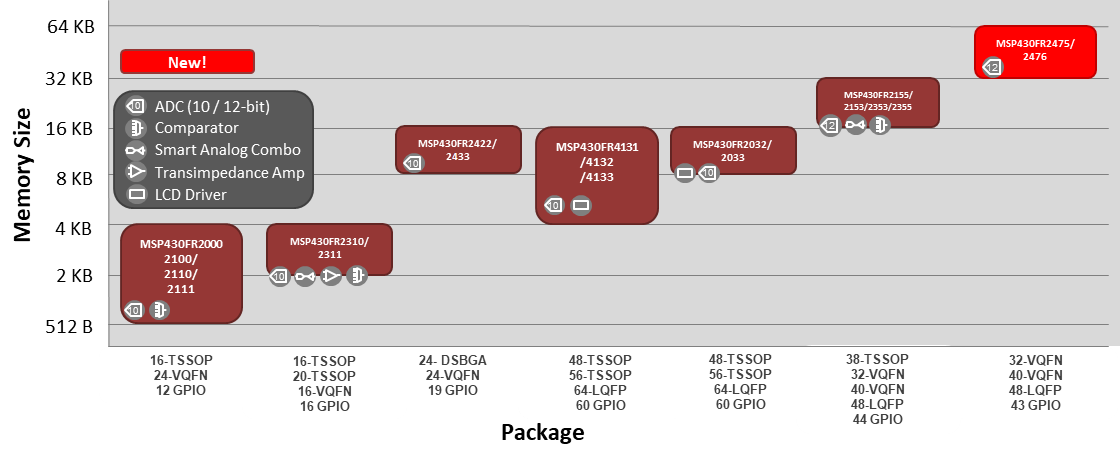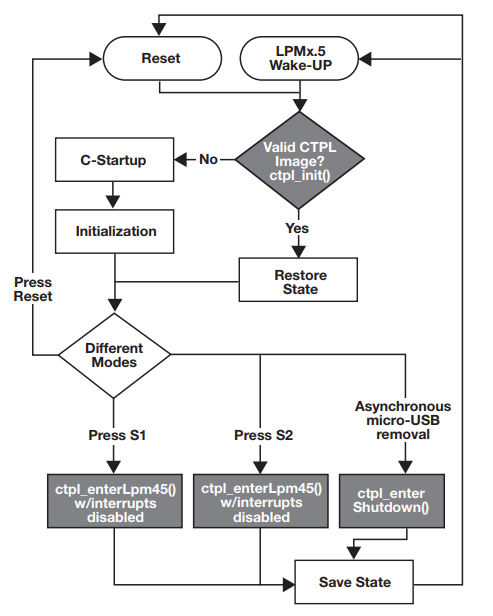SSZT426 August 2019 MSP430FR2476
Have you ever found a seemingly perfect microcontroller (MCU) that meets your design requirements, only to realize it doesn’t scale in memory or offer flexibility in peripherals? As a designer, you face challenges every day, but the scalability of an MCU should not be one of them. In this article, I’ll explain how MSP430 MCUs are able to:
- Address scalability challenges.
- Minimize board layout complexity and decrease BOM costs.
- Retain data in power loss situations.
Scalability challenges
 Figure 1 The MSP430 Value Line
cost-optimized portfolio offers scalability across different feature
sets
Figure 1 The MSP430 Value Line
cost-optimized portfolio offers scalability across different feature
setsMinimize board layout complexity and decrease BOM costs
It is possible to realize the functions mentioned above and other MCU applications on a single MSP430FR2476 device and several other lower memory MSP430 devices. The e-book “Enhance simple analog and digital functions for $0.25” highlights these different functions, with software examples included.
Retaining data in power loss situations
MSP430FR2476 devices (and all MSP430 FRAM devices) are built specifically for power loss situations. With the compute through power loss (CTPL) library, these devices can save the state of the CPU and other peripherals in non-volatile FRAM memory and restore them when the power is back up, without a full system reset. One use case for the CPTL library could be logging information on different power rails in a system for use as a diagnostic feature in the event of a power loss or system failure.
Figure 2 shows an implementation of the CTPL library that accounts for a power loss situation.
 Figure 2 Flow of an algorithm using the
CTPL library
Figure 2 Flow of an algorithm using the
CTPL libraryThe addition of the 64KB MSP430FR2476 makes it possible to use the Value Line portfolio in a much wider variety of applications where scalability is a pre-requisite. For more information on the MSP430 portfolio and some of the unique applications of the device, please feel free to refer to the links below.
Additional resources
- Request free software examples or order the MSP430FR2476 LaunchPad™ development kit.
- Check out the Intelligent System State Restoration after Power Failure with Compute Through Power Loss Utility reference design.